From Deere grandson to carriages to automobiles: the history of Velie Cars
The Illinois-based manufacturer that offered a mid-priced alternative
04/14/2020


The different paths to becoming an automaker varied widely, usually depending on one's personal circumstances in life. Take, for instance, Willard Velie.
Born in 1866, Velie was a grandson of John Deere, founder of farm apparatus maker Deere & Company of Moline, Illinois. As a young man working as secretary and a director of the family company, Velie was doing very well when he suddenly decided to set up his own business to build horse-drawn wagons and carriages. The Velie Carriage Company was incorporated in January 1902, and in no time flat boasted one of the largest carriage factories in the West. An instant success, the company supplied much-needed farm wagons and carriages to thousands of farmers and small businessmen.

However, Velie realized that the automobile was the coming thing. In 1908, he decided to take the plunge into manufacturing powered vehicles, and a new firm—the Velie Motor Vehicle Company—was incorporated on July 2. By late November, a new factory was constructed and had produced its first chassis. This was test-driven all day and then returned to the plant to have its body installed. A touring car, the workmen dubbed it "Old Maud."
Introduced for 1909 in five-passenger touring, roadster tourabout, and two- or three-passenger roadster versions (soon joined by a toy tonneau), the new Velie 30 was a very nice car. Sturdily built on a 110-inch wheelbase, it boasted a 30-horsepower four-cylinder engine manufactured by American and British Manufacturing of Bridgeport, Connecticut, hooked up to a rugged Brown-Lipe transmission and Timken rear axle. Body styling was up to date and tasteful, and the price tag for all this was just $1,750, a great value as any motorist could plainly see. When asked why he chose such a low price, Velie explained that he wanted to run his car company under the same business principles as his carriage firm: manufacture vehicles in large quantities at moderate profit and sell them quickly. He went on to make the astounding statement that he hoped to soon be producing upwards of 25,000 cars per year—a quantity almost undreamed of at the time.

The Velie company sold 1,000 cars in its first year and began constructing an addition to the factory in hopes of tripling production. For 1910, the Velie car was given a new 40-hp Lycoming engine, becoming the Velie 40, Model D touring, Model E roadster, and Model F toy tonneau in the process, but, by 1911, the company was building its own engines. The 1911 lineup included at least seven body styles—some sources claim 10—including five-passenger touring, two-passenger roadster, three- and four-passenger torpedo roadsters, a coupe, a town car, and a limousine. Prices ranged from $1,800 to $3,000, and advertising called Velie "The Climax in Auto Value." The company also launched a line of truck models this year, offered in 1-, 2-, and 3-ton versions. They were an instant success.
For 1912, the Model H and Model O continued to feature a 115-inch wheelbase, but wheelbases were increased to 118 inches for the Model M five-passenger touring and Model N four-passenger torpedo, and 121 inches for the big six-passenger Model L torpedo. With a limousine no longer in the lineup, prices topped out at $2,750. The company moved into a lower price range for 1913 with the new Model 32 touring tagged at a mere $1,350, the new Dispatch roadster priced at $1,450, and $1,500 for the Dispatch touring. However, it still offered prestige automobiles in the Model 40 range, with a four-passenger torpedo roadster for $2,000, five-passenger touring, also $2,000, and a limousine returning to the line at $3,000.

Velie automobiles did well in endurance racing and hill climbs, and even competed in the inaugural Indianapolis 500 race, coming in a respectable 17th in a field of 46 cars. But one place where the company was lagging was in production, which remained around 3,500 units annually. It had proven difficult to raise that number with the equipment and procedures they used, so Velie poured more capital into the business in an effort to build more automobiles.
The lineup was restructured again for 1914, with the lowest-priced model the Series 5 touring car, with a 113-inch wheelbase and 26 hp, tagged at $1,500. The midrange Series 9 offered touring, roadster, and torpedo models with a 121-inch wheelbase and 34 hp—all priced at $2,000. And Velie introduced its first six-cylinder car, the Series 10, on a 126-inch wheelbase, priced at $2,350 but with just 34 hp, the same output as the Series 9 four-cylinder. The six-cylinder was supplied by Continental. Up to about 1915, Velie cars were retailed mainly through John Deere implement dealers, but with sales nowhere near expectations, management decided to build its own dealer network in order to show the cars in more appealing settings.

The 1915 lineup was expanded and improved considerably. The new base series was called the Biltwel and featured four models priced $1,595 and up, riding a big 124-inch wheelbase and powered by a 29-hp Continental L-head straight-six. Next up the ladder was the Big Four, driven by a 34-hp four-cylinder. The 128-inch-wheelbase Big Six series topped the line, with touring, roadster, and toy tonneau models all priced at $2,015.
Early in the year, the company was awarded a contract by the French government to build 600 light trucks for the war. Car production was already being constrained by the diversion of raw materials for war work—the World War, the one to end all wars as it was called, was raging in Europe. Although Velie was able to continue building cars, there were times when certain models sold out early and were unavailable for the balance of the model year.

Bowing to popular taste, Velie dropped its four-cylinder line for 1916, instead offering two six-cylinder series. The Biltwel 25-hp Model 22 came in three versions: $1,065 touring, $1,045 roadster, and $1,750 coupe. The Biltwel Model 15 offered both five- and six-passenger touring cars at the same $1,400, buyer's choice.
The following year, 1917, saw the Velie Biltwel Model 28 with seven body styles, ranging from the $1,115 two-passenger roadster to the $2,200 five-passenger town car on a 115-inch wheelbase, and the Model 27, a single five-passenger touring car on the 124-inch wheelbase.

By 1918, the Biltwel name went out of usage, and the cars were called just Velie. The 115-inch-wheelbase Model 38 was the volume line, offered in seven body styles priced from $1,340 for a roadster, on up to $2,450 for a town car. The flashy series was the Model 39, on a 124-inch wheelbase, offering a seven-passenger touring car and something really special: the four-passenger Sport Car, with sweet lines and exhaust pipes sprouting from the hood.
After the Armistice was declared in November 1918, Velie was able to get back to building cars in higher volume. The 1919 lineup comprised the same models as the year before, though with much higher prices, probably a result of wartime inflation.

For 1920, a new Model 48 introduced a rather unique straight-line angular look that met with mixed reactions from buyers. Velie called it "A Harmony of Symmetrical Planes." Power was now up to 55 hp, a much-needed increase. A new Velie Model 34 five-passenger touring was also introduced, on a short 112-inch wheelbase and powered by a 37-hp Falls six-cylinder engine. Prices continued to climb, with the Model 34 tagged at $1,585 and the Model 48 ranging from $1,885 to $2,650.
The Model 34 series was expanded for 1921 with a two-passenger roadster, four-passenger coupe, and five-passenger sedan supplementing the carryover touring car. Prices for open cars were lower—the touring and roadster were $1,385 each. On the other hand, the new closed models were priced at $2,485. Model 48's lineup was shuffled a bit, and now consisted of five- and seven-passenger touring cars, the four-passenger sport, a four-place coupe, and a six-passenger sedan. Prices topped out at $2,650.

The big news for the 1922 model year was the debut of the Model 58, a 45-hp Velie-built "Vibration-less" six-cylinder line on a 115-inch wheelbase. Priced as low as $1,395 for the touring and roadster models, and $2,195 for the coupe or sedan, they represented fine value for the dollar. According to one source, the Models 34 and 48 were also continued, albeit with reduced prices.
By 1923, the Model 58 proved so popular that it became the only offering, with a range of five body types boasting terrific new styling that did away with the angular look. Prices were cut to a mere $1,275 for the touring and roadster, and $1,795 for the sedan or new two-door brougham sedan. The five-passenger Sport returned to the line, at a price of $1,305, but without the side pipes and fancy top. A special model dubbed the "Silver Swallow" boasted a varnished and hand-buffed aluminum body. Also new was a five-passenger touring sedan, offering disc wheels, two side-mounted cord tires, two suitcases, a hat box, and plush interior trim.

Everything was upgraded for 1924, with the Model 58 line expanded and now riding a 118-inch wheelbase, powered by a 47-hp engine. Prices now ranged from $1,275 to $2,095.
When the 1925 model year started, there was a new Model 60 five-passenger Royal Sedan at the top of the line. The Royal Sedan interior trim was very rich-looking, yet its price was a very reasonable $1,925. Joining it was a new "four-door coach" sedan for $1,440, a five-passenger phaeton priced at only $1,225, and a new Standard Sedan at $1,700.

A sharp new Club Roadster was introduced for 1926, but the car that really enhanced Velie's reputation for fine styling was an updated Royal Sedan, now boasting a slanted windshield that was quite innovative and very attractive. With a more rounded roof panel and modern body lines, the Royal Sedan looked much more expensive than its $1,825 price tag.
Velie was doing well and for 1927 added a new lower-price Model 50 on a shorter 112-inch wheelbase. At just $1,045, it was the lowest priced Velie in a decade. Around age 60, Willard Velie was joined in the business by his son Willard Jr. to ensure continuity when it came time for Will Sr. to retire. He planned to stay on a few years more to allow his son enough time to learn the business thoroughly.

The 1928 line was perhaps the best in Velie history to that point. The Model 66 series offered six different styles on a 112-inch wheelbase, while the Model 77 included four high-styled models on a 118-inch wheelbase. The Model 88 line, consisting of a Club Phaeton, Special Sedan, and Royal Sedan on a grand 125-inch chassis, powered by the brand's first eight-cylinder engine—a 90-hp Lycoming—topped out at $2,095.
The 1929 line was pruned a bit, but most models were carried over with minor price adjustments. But then, on October 24, 1928, Willard Sr. died quite suddenly, of an embolism it was said. After the funeral services were over and production restarted, Willard Jr. announced that Velie production would be increased for the coming year. However, the difficulty of running the company apparently proved too much for the young Velie, and by the end of November it was announced that the Velie car was going out of production. Willard Jr. would concentrate on the other Velie business of manufacturing small airplanes. But even this proved impossible, because in March 1929 he died, just five months after his father. With no one left to run the businesses, the remains of both firms were sold off, ending the Velie saga.



On this episode of Repair2Rev, join us as Riley and Dane share invaluable tips and tricks on tackling one of the most crucial aspects of vehicle maintenance: the brakes. From the essential do's and don'ts to the step-by-step process of replacing and upgrading front disc brakes, you'll learn everything you need to know to keep your ride safe and reliable.
As they move to the rear of the truck they delve into the intricate world of rear drum brake systems, demonstrating the art of rebuilding and restoring this often-overlooked component of classic trucks. And to ensure your truck stops on a dime, they'll wrap up the episode with a comprehensive guide to bleeding the brake system, leaving no stone unturned in their quest for peak performance. Knowledge gained here will help you find your bargain buy without the anxiety of lacking repair tips. Hemmings is the ultimate destination for finding your perfect ride. Head to Hemmings.com to register and start your search today.
The British motor industry is well represented on this week’s round up of successful sales on Hemmings.com. The strongest listing went to an LS V8-powered 1997 Land Rover Defender 110 custom that outperformed the market and looked to be able to well outperform a stock 110. A 1978 Aston Martin AM V8 found a new home via auction, the same fate experienced by a V12-powered 1972 Jaguar XKE Series 3 roadster. The original Jeep Grand Wagoneer was perhaps the first luxury SUV and the 1988 example sold on Hemmings.com featured low-mileage and excellent overall condition. There are few muscle cars are instantly recognizable as a Carousel Red Pontiac GTO Judge, like the 1969 model detailed below. Finally, we look at a restored 1913 Ford Model T Runabout sold from a Canadian-based collection.
For the week of May 12 through May 18, a total of 61 listings crossed the Hemmings Auctions block. Including Make Offer listings of previously ended auctions, a total of 40 cars were sold, resulting in a net 66% sell-through rate. An additional 29 cars were sold via direct Make Offer listings.
You can keep abreast of the latest consignments by subscribing to the daily Hemmings Auctions email newsletter.
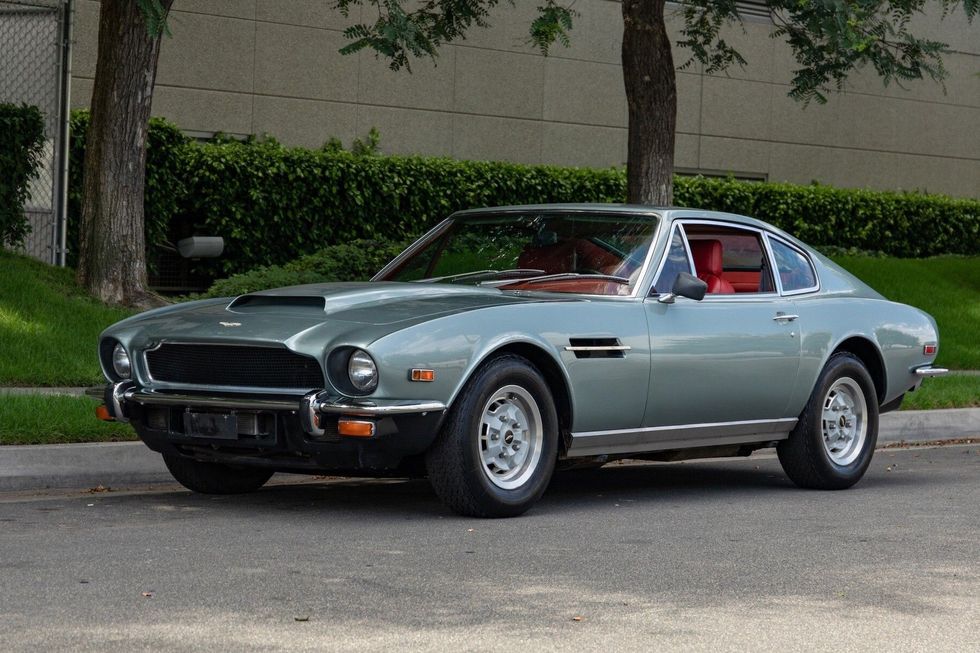
Reserve: $80,000
Selling Price: $84,000
Recent Market Range: $45,000-$80,000
Aston Martin produced some version of its V8-powered saloon from 1969 through 1989, though we are more likely to refer to the body style as a coupe on this side of the Atlantic. A beefy 5.3-liter DOHC V8 with multiple carburetors and a stout Chrysler-sourced TorqueFlite automatic very much gave the models a muscle car vibe, albeit one made with fine leather upholstery and thick wool carpets. This silver on red 1978 Aston Martin AM V8 Series III saloon, which traded hands last year via online auction for $46,988, achieved one of the highest prices seen in recent years for a coupe equipped with a standard-specification engine, particularly outside the U.K., where values are typically stronger.
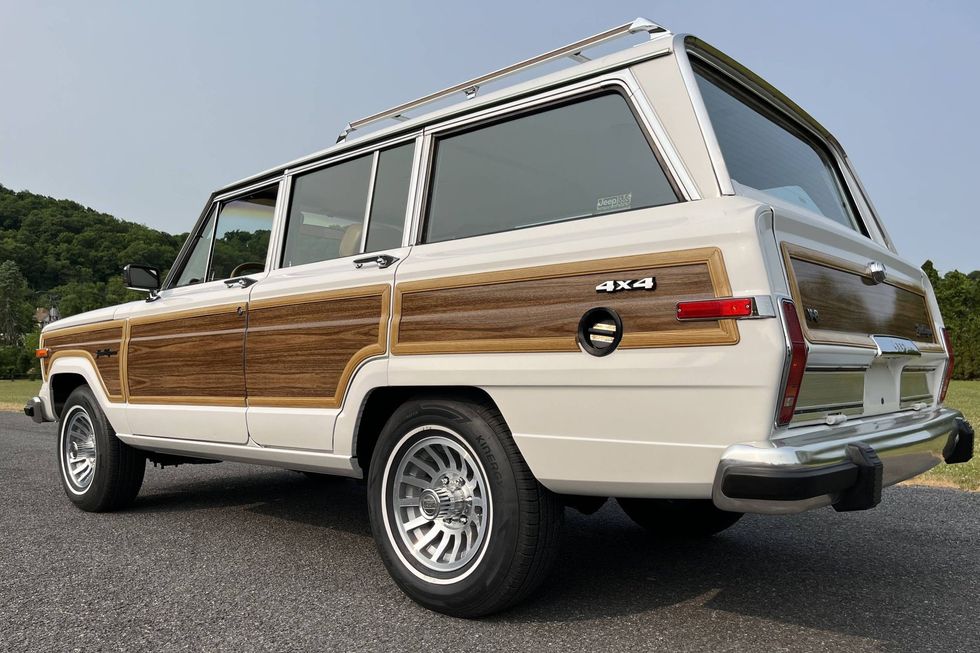
Reserve: $63,000
Selling Price: $68,775
Recent Market Range: $54,000-$75,000
Perhaps no other American vehicle has combined class and off-road capability quite like the original Grand Wagoneer, the trailblazing luxury SUV that was produced by Jeep for almost three decades. This 1988 Jeep Grand Wagoneer was submitted with just 27,417 miles showing on the odometer and plenty of notes from the seller indicating the original condition of the vehicle and all of its major components. The undercarriage, interior and engine bay photos all appeared to show an exceptionally clean example, which is notable for a rust-prone vehicle that has been in the Northeast since new. The net sale price, achieved with the 39th bid, was in line with market expectations for this very collectible vehicle.

Asking Price: $150,000
Selling Price: $157,500
Recent Market Range: $80,000-$150,000
The Land Rover Defender market shows no signs of slowing down, particularly as more and more examples are allowed into the U.S. via the DOT’s 25-year rule for previously banned imports. Likewise, there is a burgeoning market for what can best be described as restomodded examples, like this 1997 Land Rover Defender 110, which was powered by a modern GM LS3 V8, the same powerplant found in later C6 Corvettes. The list of what was original to this SUV might be shorter than what was changed, given the comprehensive nature of the build. Achieved via a direct Make Offer listing, the net sale price of this Land Rover was at the very top end of recent market activity for such customized Defenders.
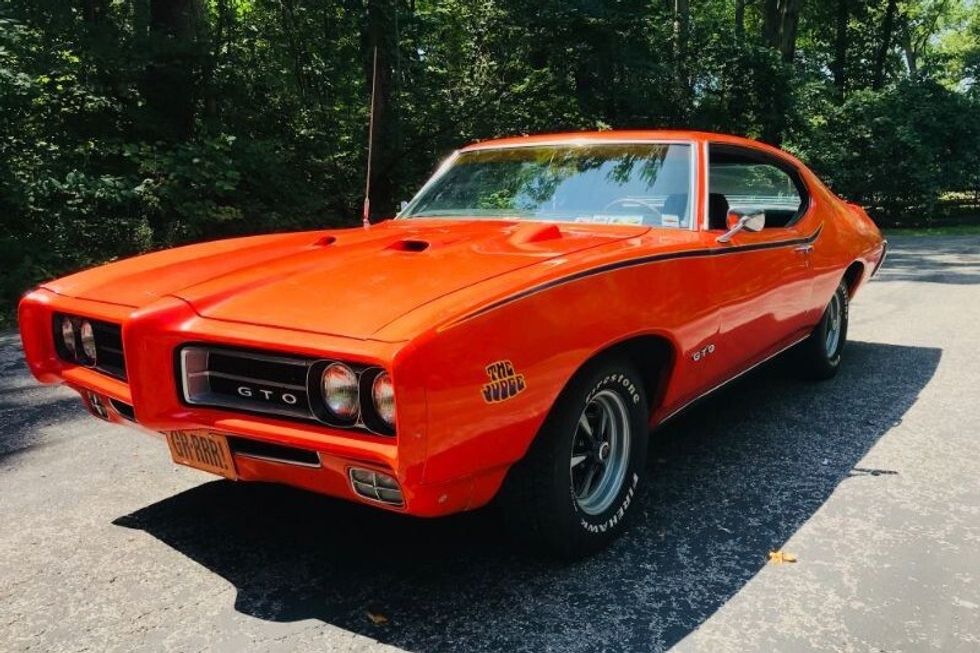
Reserve: $54,000
Selling Price: $52,500
Recent Market Range: $46,000-$62,000
This 1969 Pontiac GTO Judge ticked all the right boxes: matching numbers with photos verification of the partial VIN stamping on the engine block of the original Ram Air III V8, Muncie four-speed manual transmission, PHS documentation, and that classic Carousel Red finish and Judge decals. It looked to be in excellent overall condition, but it also appeared to have been driven and enjoyed some in recent years, with some signs of wear. And the net sale price, achieved via post-auction Make Offer listing, reflected the condition and authenticity of the car. A concours-level example, or one with a rare Ram Air IV engine for example, would likely command a premium over this one.
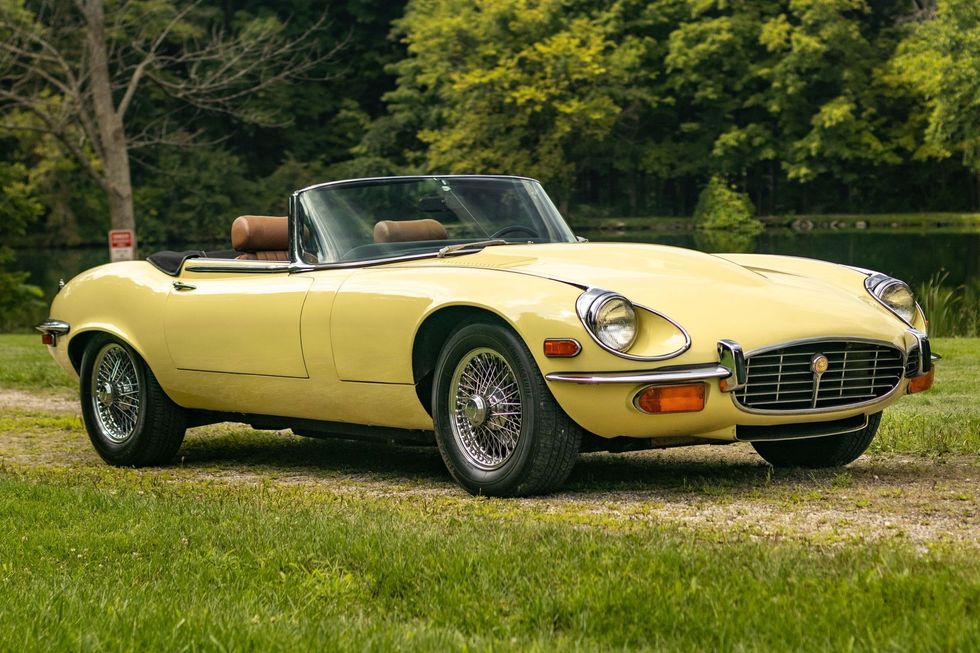
Reserve: $65,000
Selling Price: $69,825
Recent Market Range: $78,000-$115,000
The final iteration of the Jaguar XKE was a bit larger than the original and not as precisely focused on its sporting nature. Rather, with a big V12 under the hood, it was more of a GT car. This 1972 Jaguar E-type Series III Roadster appeared to have some minor wear and tear and signs of road use, but it made up for any shortcomings with what appeared to be an abundance of authenticity. The seller noted that the exterior finish, interior upholstery and engine were all original. Reflecting the low number of owners and the car’s years sitting in a museum, the odometer reading of just over 30,000 miles was also believed accurate. While the net sale price was below market expectations, it was not too far off.
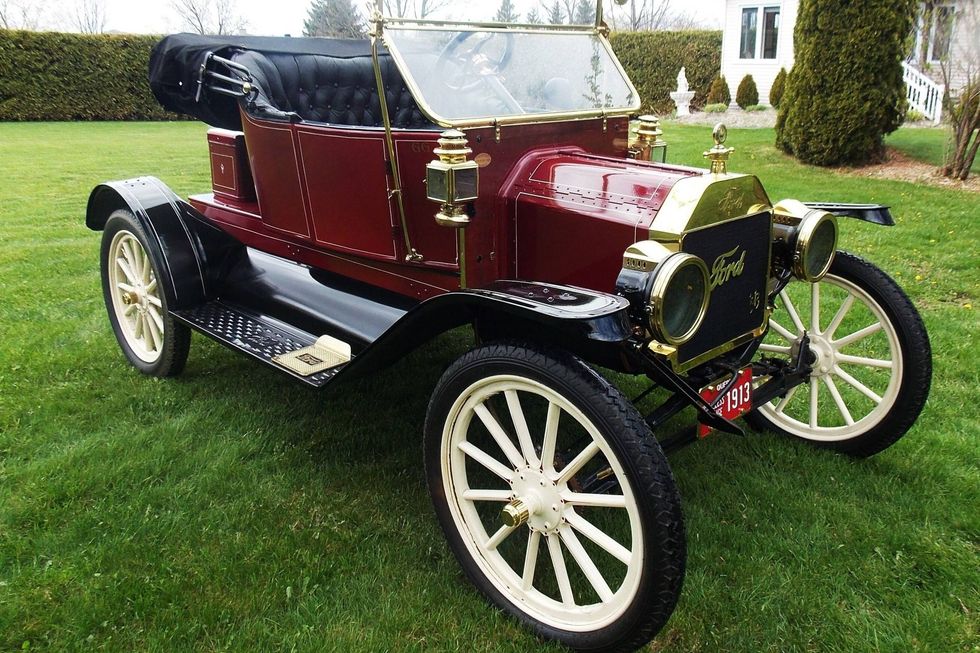
Reserve: $25,00
Selling Price: $26,250
Recent Market Range: $22,000-$36,000
There has never been a shortage of early Fords at Hemmings, dating to the earliest days of our magazine. Like any other vehicle, the most desired examples in the best condition will always attract the bidders. This 1913 Ford Model T Runabout appeared to have been restored to high level and showed only minimal signs of use. It was also equipped with an electric starter. The maroon body, black fenders and white spoke wheels nicely complemented the button-tufted black vinyl seat. The undercarriage appeared to be exceptionally clean, indicating little use for the car that was said to come from a Model T collection. The next sale price was well within the going market rate for an open-top, two-seat, early Model T.